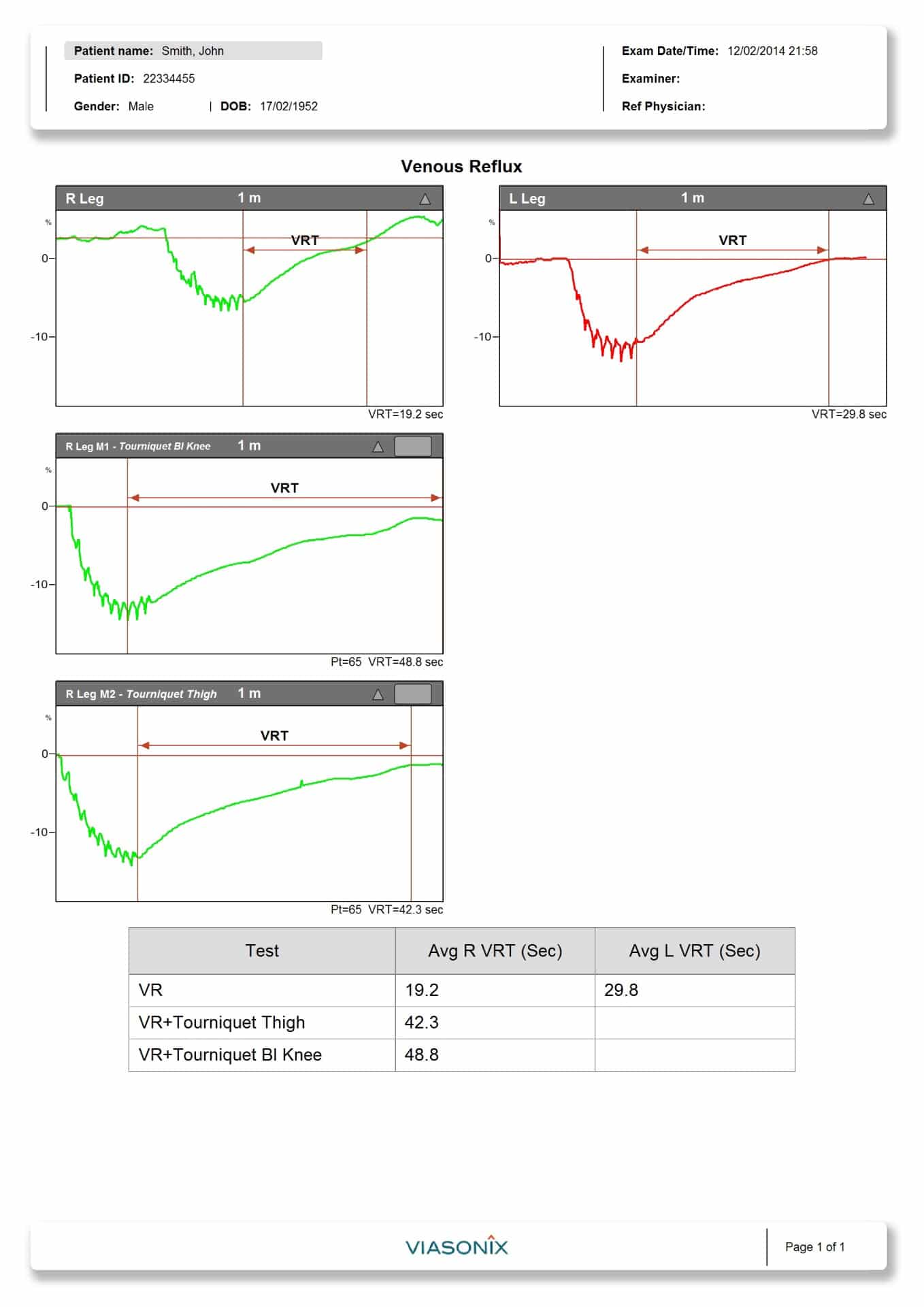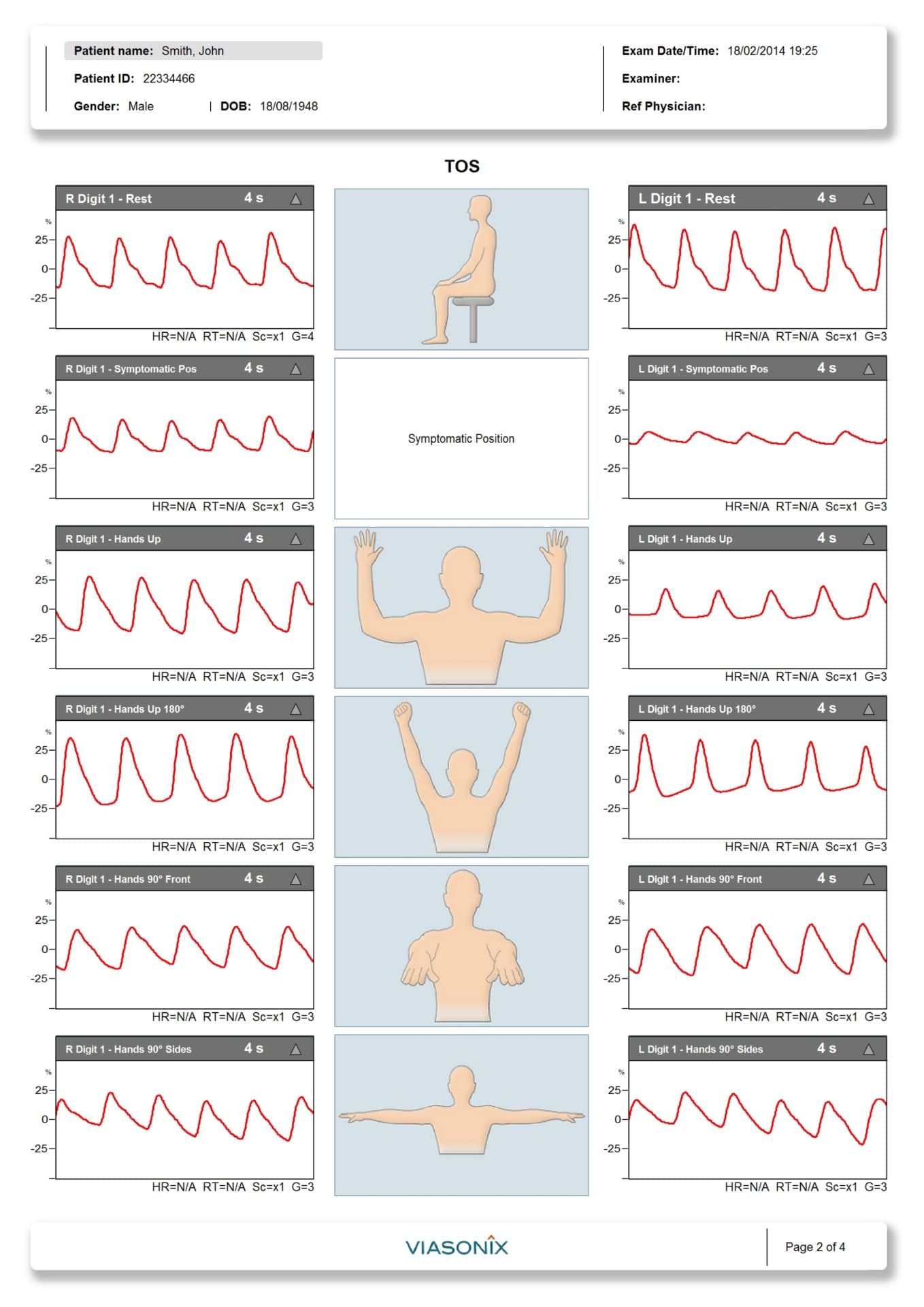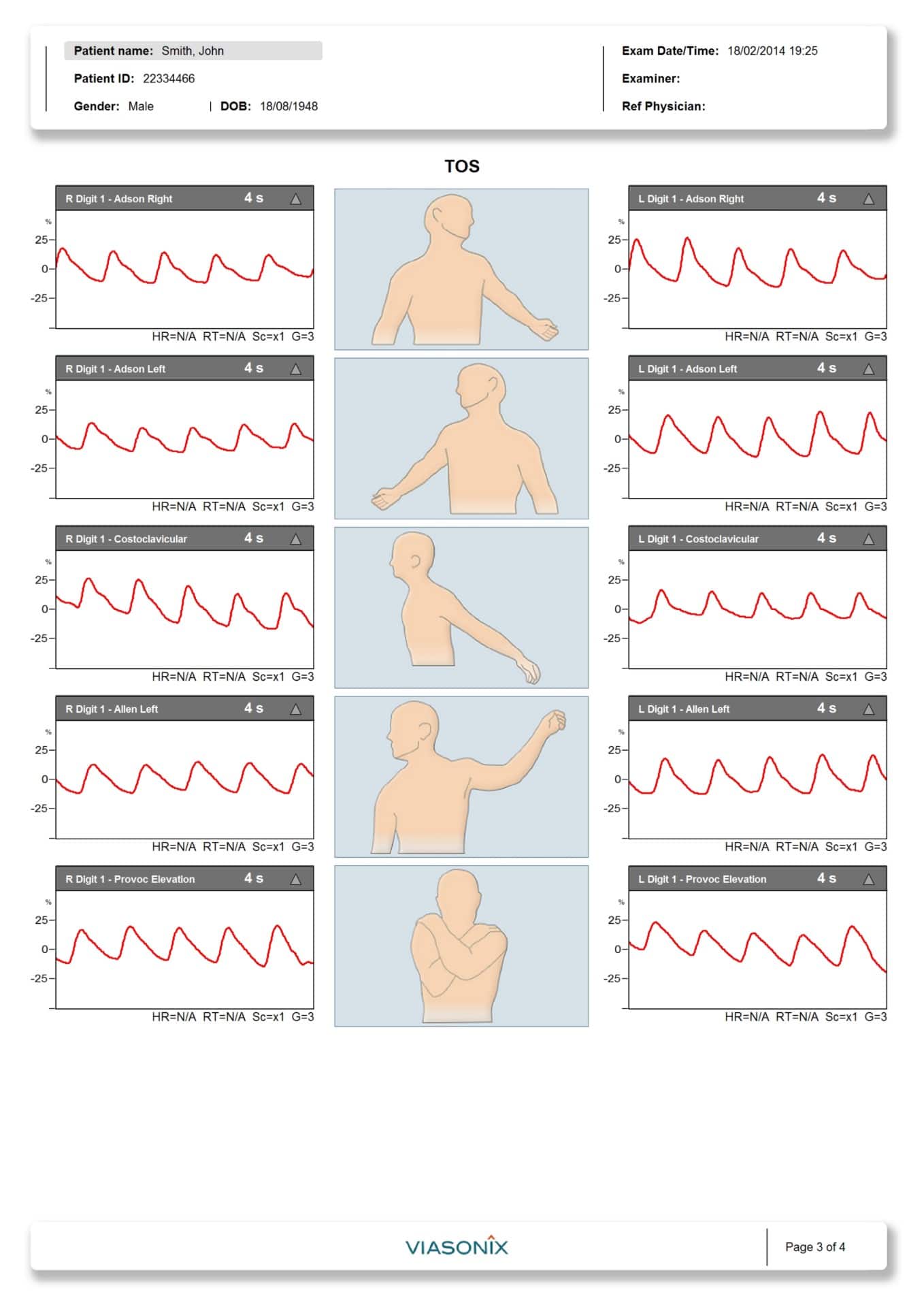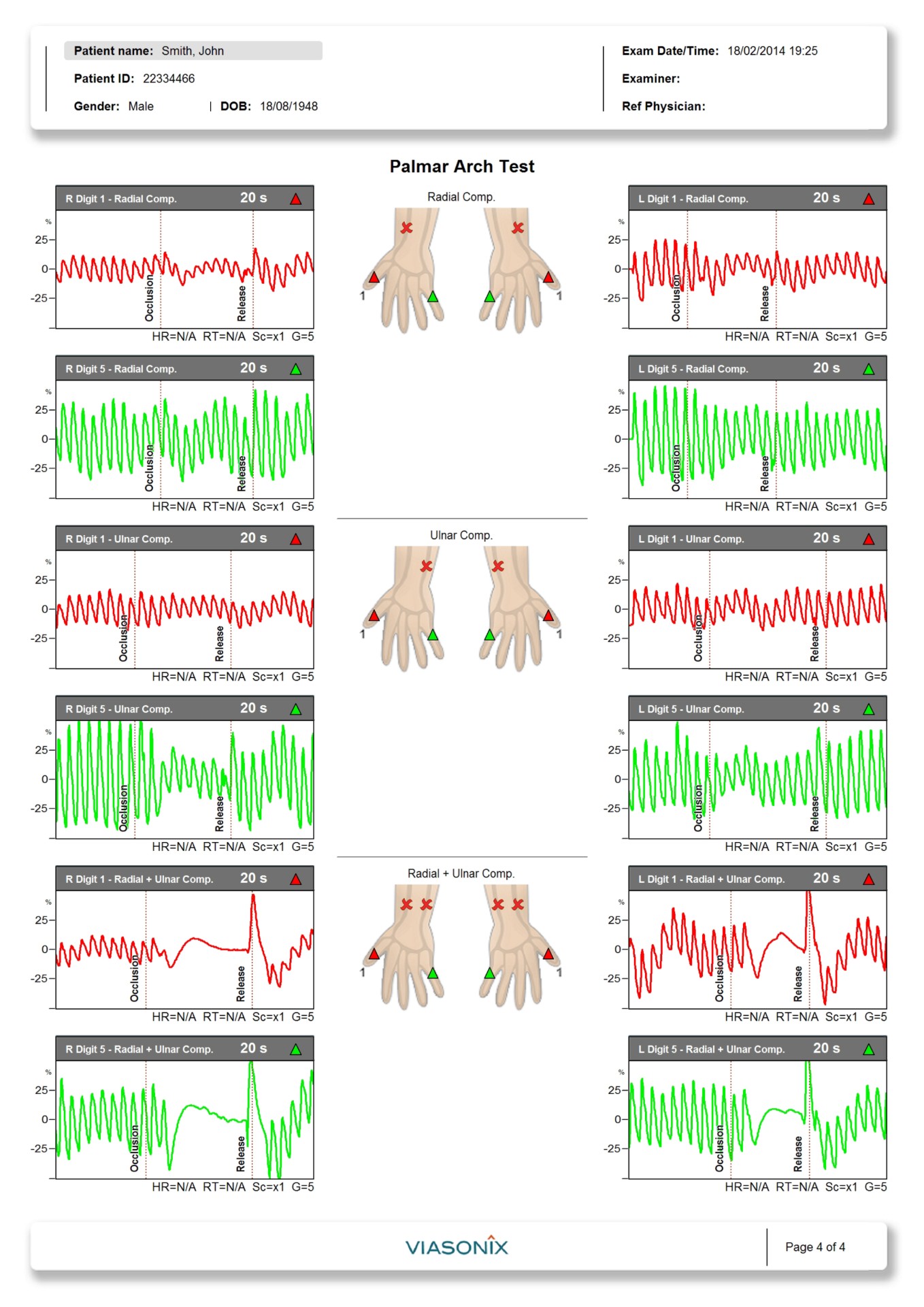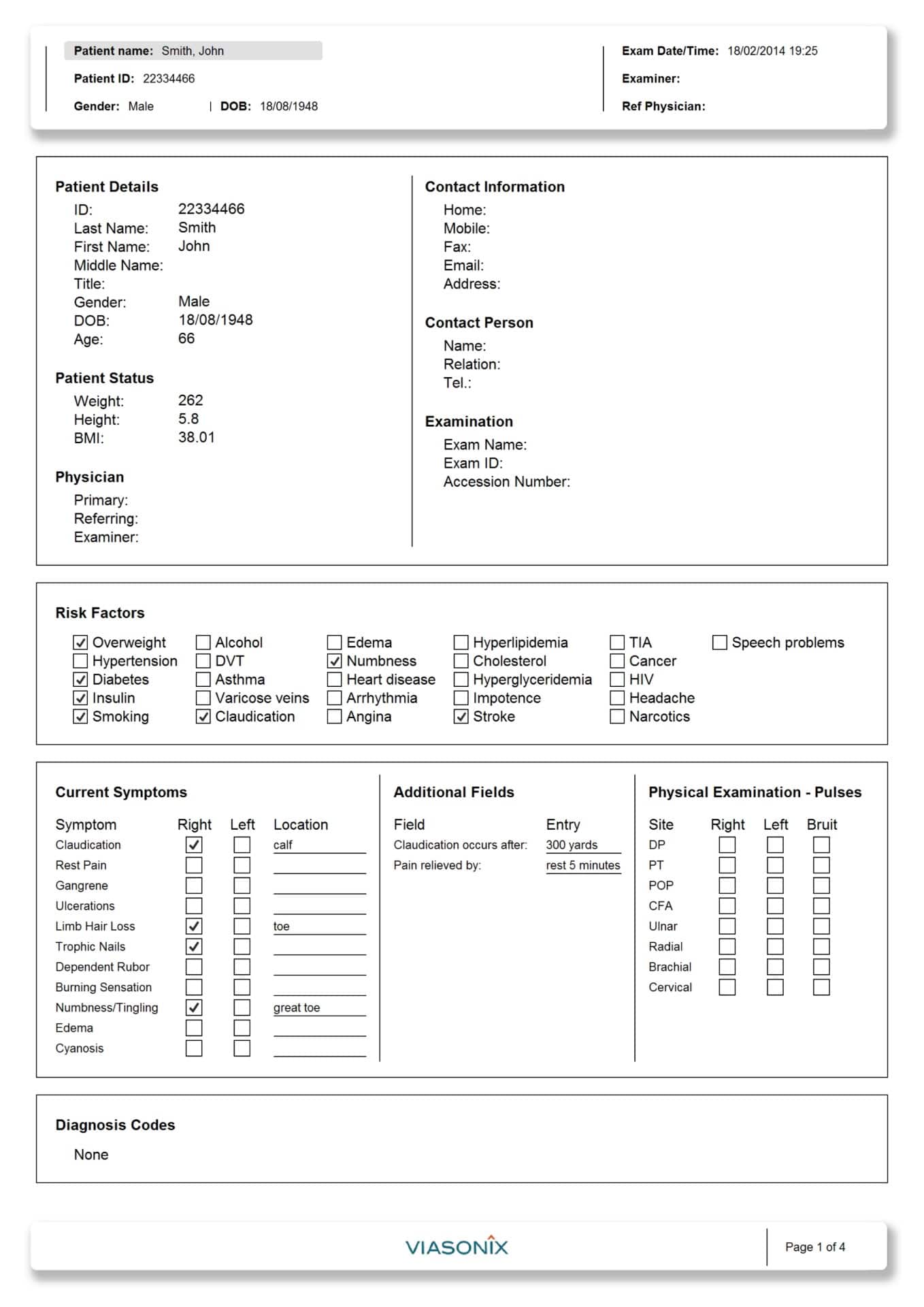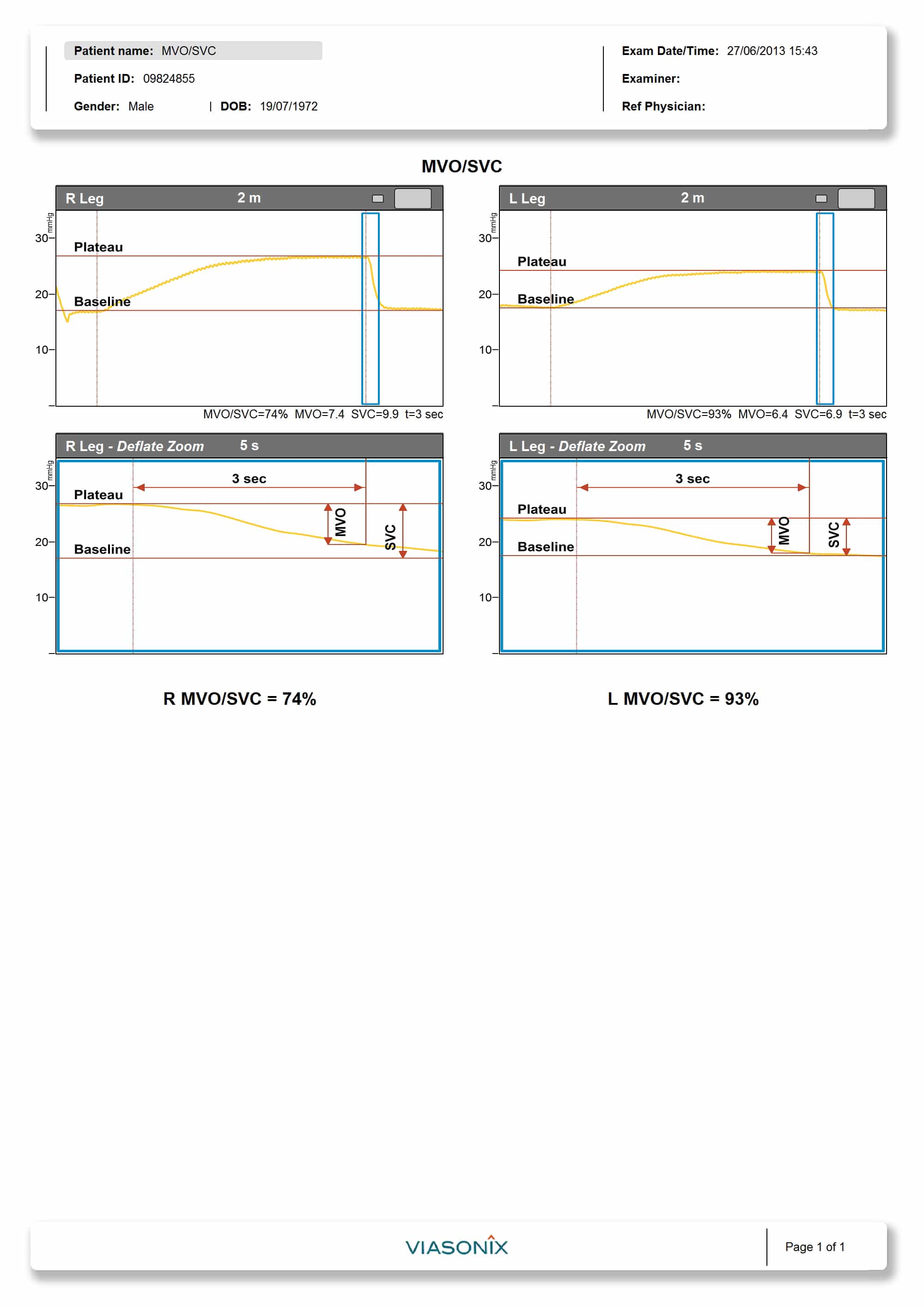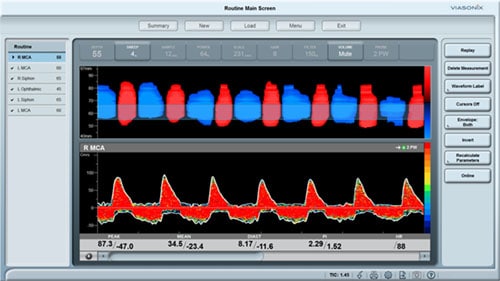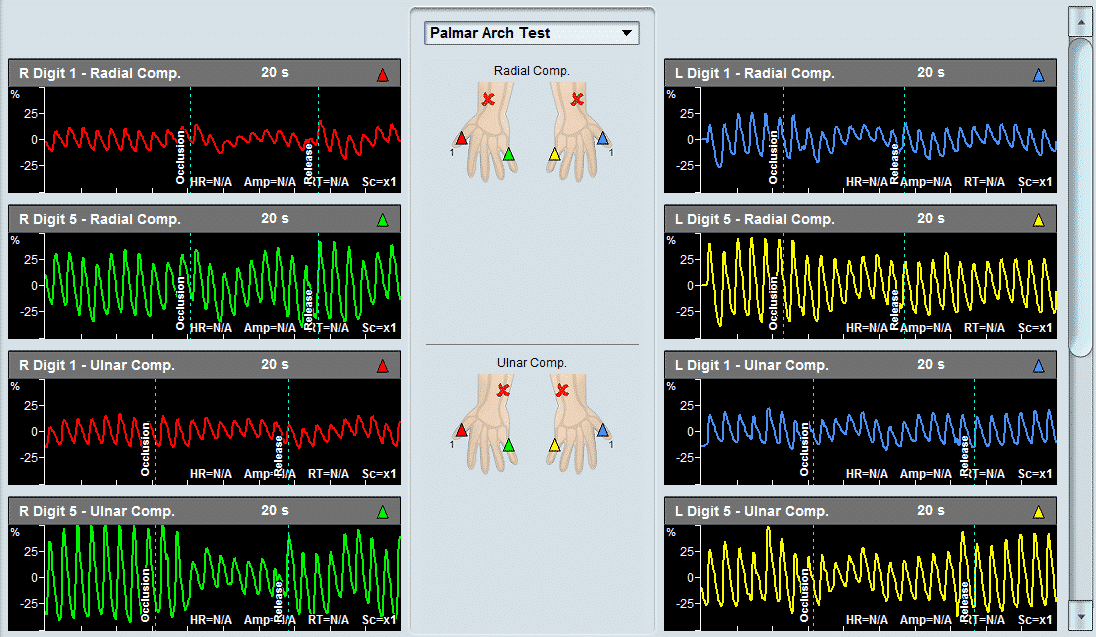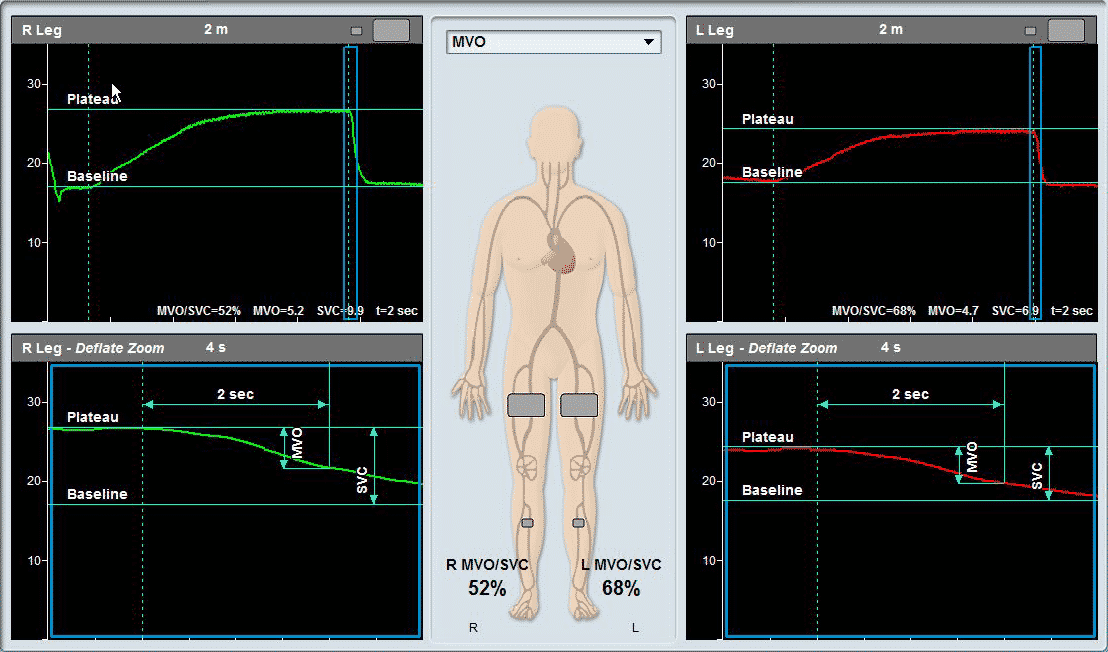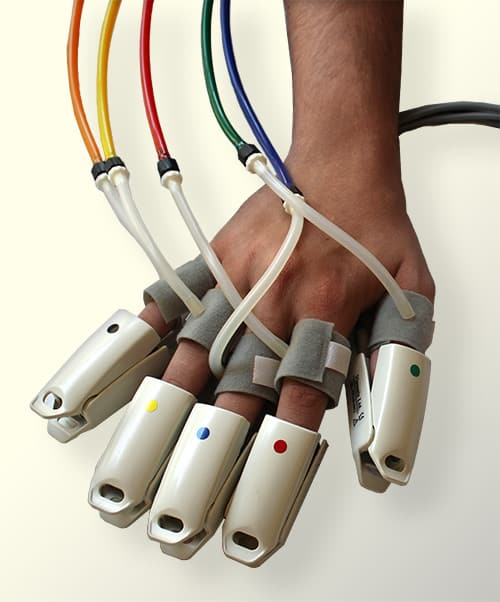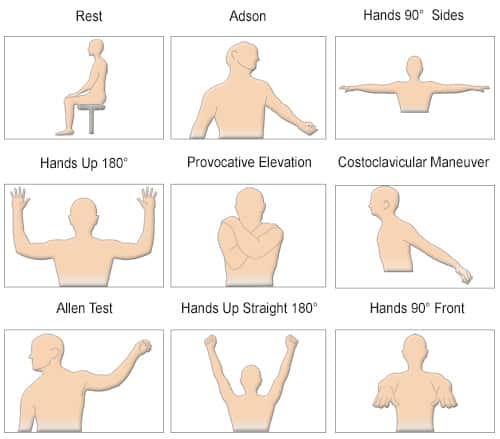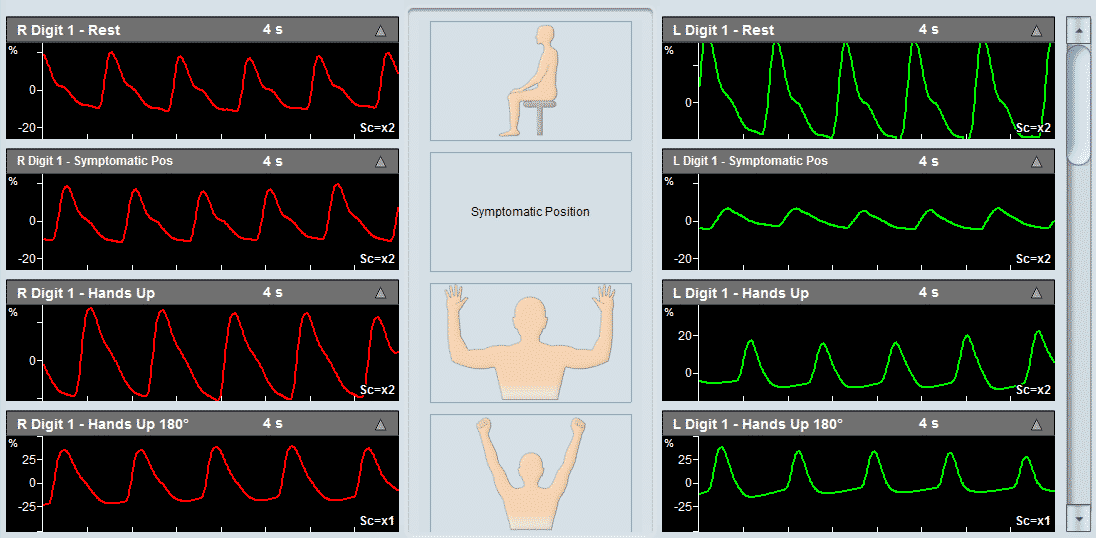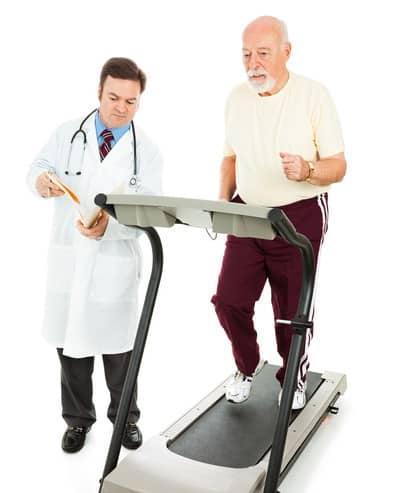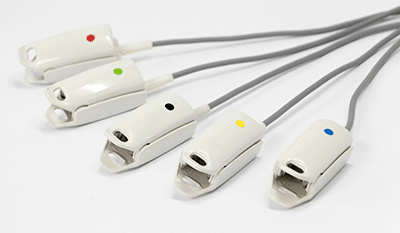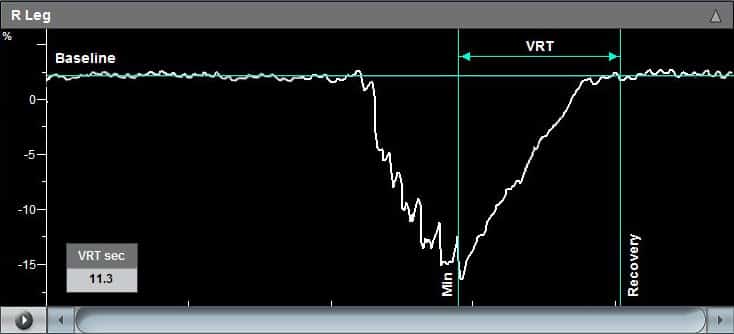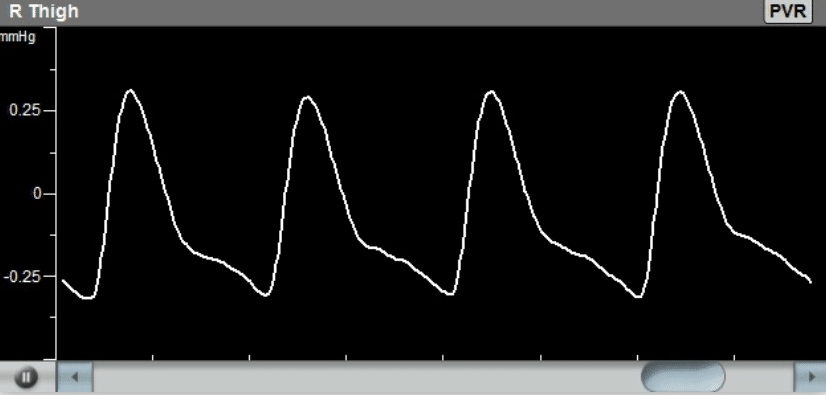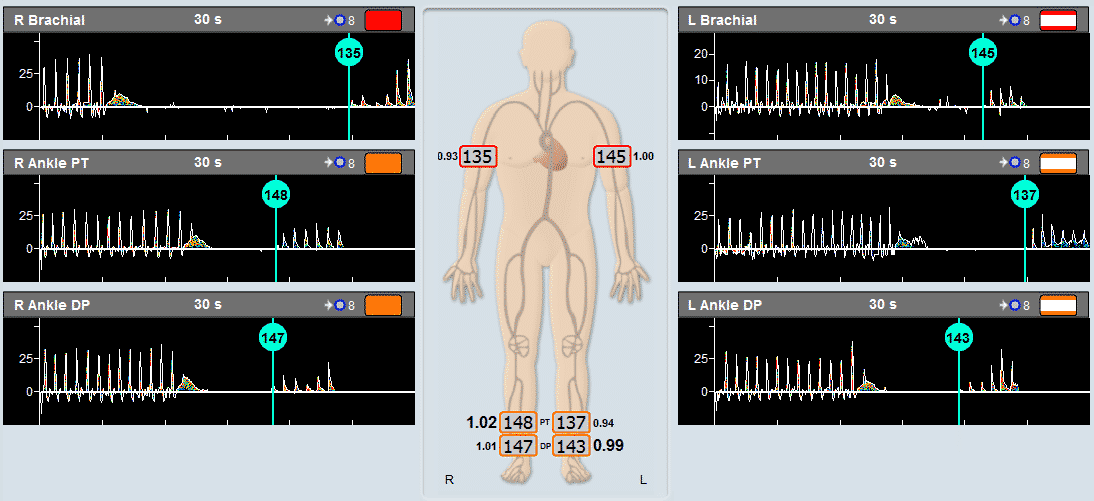The venous reflux test is designed to assess lower limb venous competence. The test is performed with the patient in a sitting position with the legs in the air (not touching the ground).
To perform the test, place PPG sensor on the patient calf with the aid of the Viasonix adhesive sticker, record PPG signal until the PPG signal level reaches a plateau, ask the patient to perform foot dorsi-flexions on the tested side for several times and request the patient to continue sitting without movement until the PPG signal returns to the baseline level. Falcon Pro will automatically calculate and display Venous Refill Time (VRT) which is recovery time from the lowest point of the PPG signal (after dorsiflexion) to the signal returns to the baseline.
Figure shows right leg has a fast recovery time (short VRT), indicating venous incompetence. A longer VRT at repeated tests with tourniquet suggests venous reflux affects superficial venous system only.


